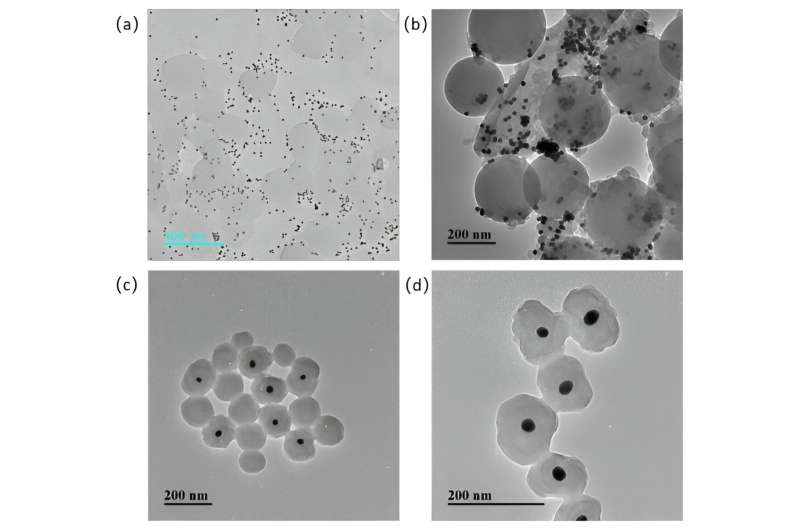This article has been reviewed according to Science X's editorial process and policies. Editors have highlighted the following attributes while ensuring the content's credibility:
fact-checked
peer-reviewed publication
trusted source
proofread
New quantitative tracer helps to investigate bioaccumulation of nanoplastics in freshwater ecosystems

Nanoplastics (NPs) can cause a variety of adverse effects in humans, including physical damage, oxidative stress, impaired cell signaling, and developmental defects. The monitoring of NPs in the environment still remains a challenge due to their small particle sizes, different shapes and chemical compositions, easy aggregation and sedimentation.
In addition to environmental monitoring, studies of NPs in the laboratory and controlled fields could provide reliable and quantitative data for the toxicity, distribution, and bioaccumulation of NPs. To this end, labeling NPs with a tracer represents an effective way to track or quantify NPs in complex environments.
A research team led by Prof. Guo Rongbo and Prof. Fu Shanfei at the Qingdao Institute of Bioenergy and Process Technology (QIBEBT), Chinese Academy of Sciences (CAS), has developed a method for size- and surface charge–tunable core-shell Au@Nanoplastics (Au@NPs) synthesis, which can be used to study the environmental fate of NPs in an artificial freshwater system. Their study was published in Analytical Chemistry on Aug. 11.
The core-shell Au@NPs was synthesized through a three-step process that included synthesis of the Au core, prepolymerization of styrene, and polymerization. The Au core enables quantitative detection of NPs, while the polystyrene shell exhibits NP properties. The size of the core-shell Au@NPs could be well controlled by adjusting the polymerization reaction time, as well as the amount of styrene used.
The Au@NPs showed excellent resistance to environmental factors (e.g., 1% hydrogen peroxide solution, simulating gastric fluid, acids, and alkalis) and high recovery rates (>80%) from seawater, lake water, sewage, waste sludge, soil, and sediment, making them ideal for environmental fate and behavior studies of NPs in a variety of complex environmental systems.
More information: Shan-Fei Fu et al, Core–Shell Au@Nanoplastics as a Quantitative Tracer to Investigate the Bioaccumulation of Nanoplastics in Freshwater Ecosystems, Analytical Chemistry (2023). DOI: 10.1021/acs.analchem.3c01666
Journal information: Analytical Chemistry
Provided by Chinese Academy of Sciences





















